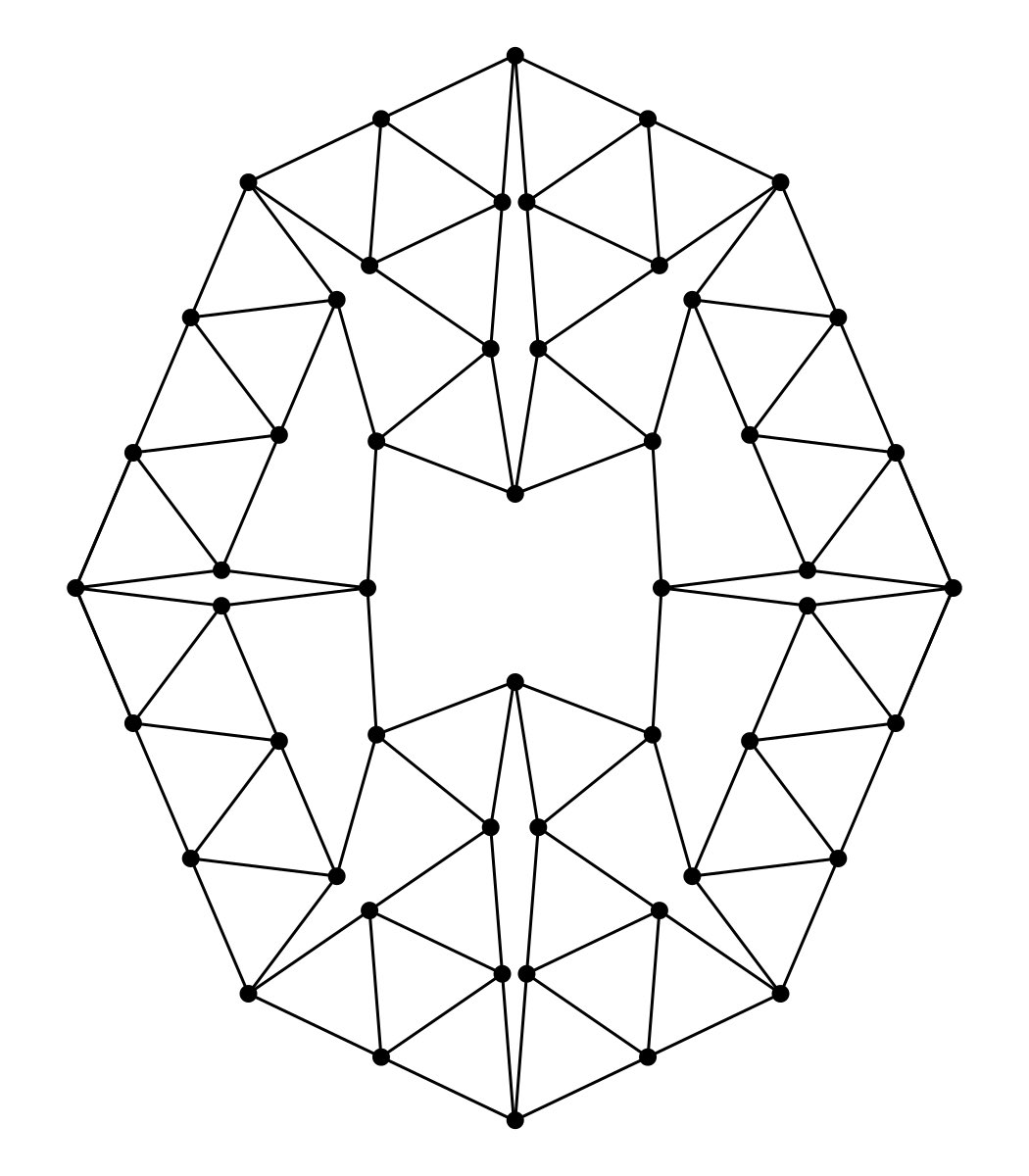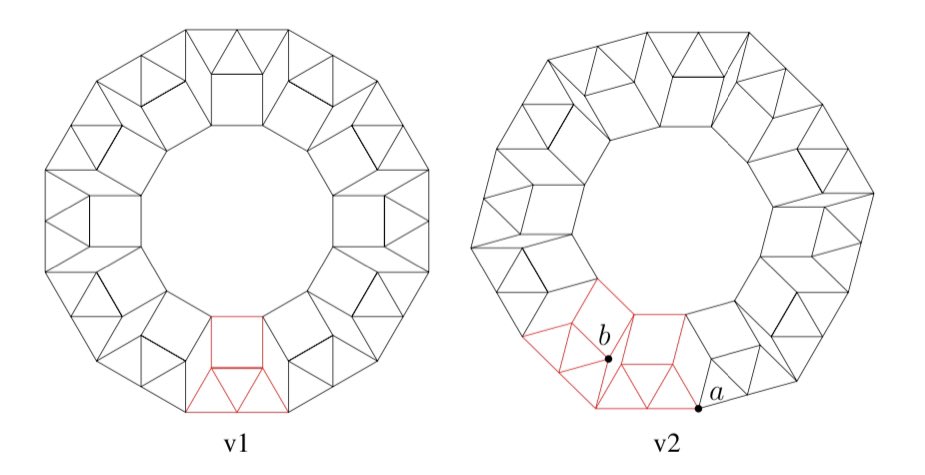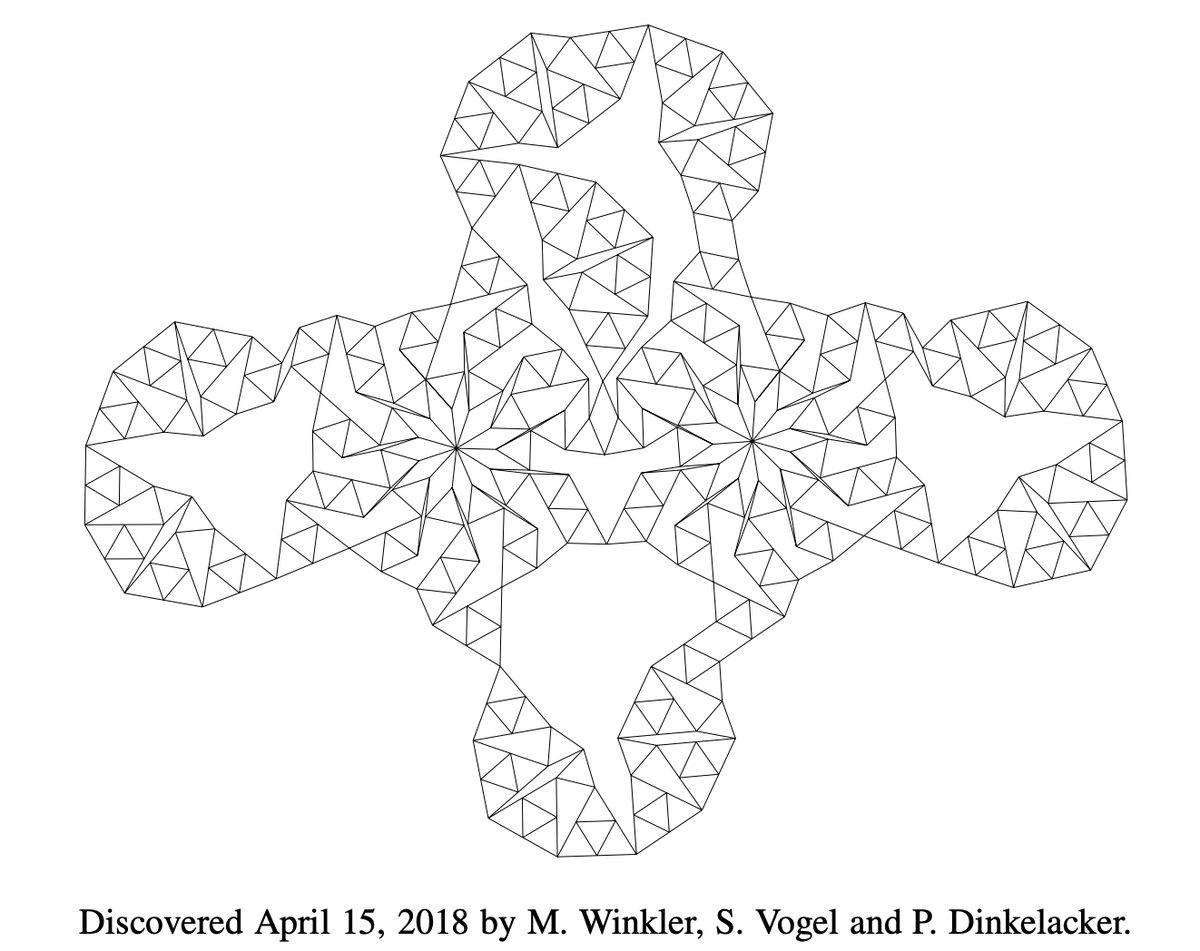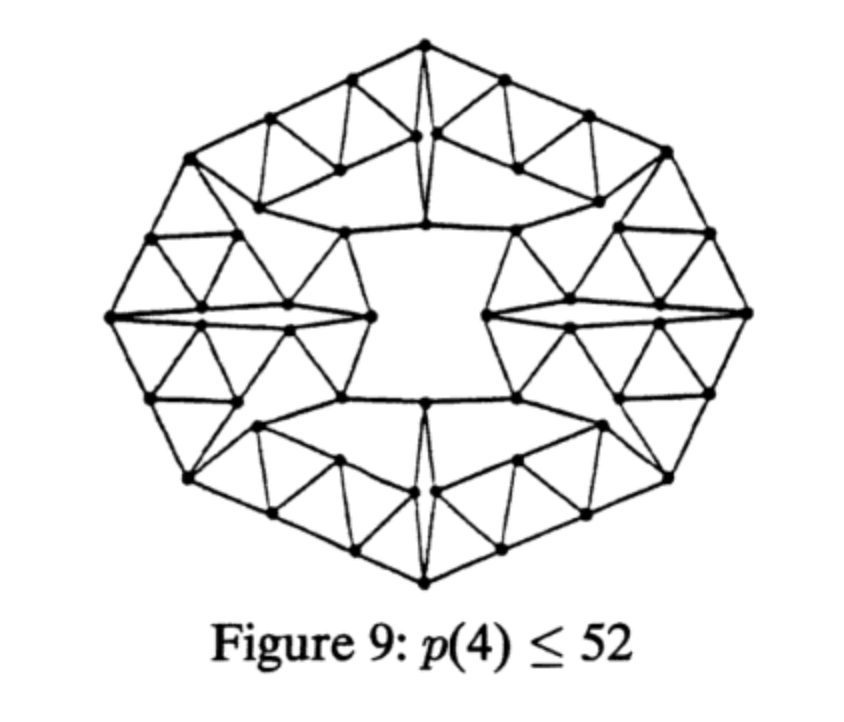This is the Harborth graph, the simplest known planar graph in which all the edges are the same length and every vertex has exactly four neighbours.
That diagram is from this paper, which has many such diagrams. They also look at a variation where we choose some number k ≠ 4 and say that every vertex must have either 4 or k neighbours.
https://arxiv.org/pdf/1604.07134.pdf
https://arxiv.org/pdf/1604.07134.pdf
Here’s one in which each vertex has either four or eleven neighbours. (You can see two stars formed by the two vertices that have 11 neighbours; the others have 4.)
The image of the Harborth graph that I posted was generated by Claudio Rocchini, using coordinates computed by Eberhard Gerbracht.
• The image, and the code used to generate it: https://commons.wikimedia.org/wiki/File:Harborth_graph_vector.svg
• The computation of the coordinates: https://arxiv.org/abs/math/0609360
• The image, and the code used to generate it: https://commons.wikimedia.org/wiki/File:Harborth_graph_vector.svg
• The computation of the coordinates: https://arxiv.org/abs/math/0609360

 Read on Twitter
Read on Twitter


